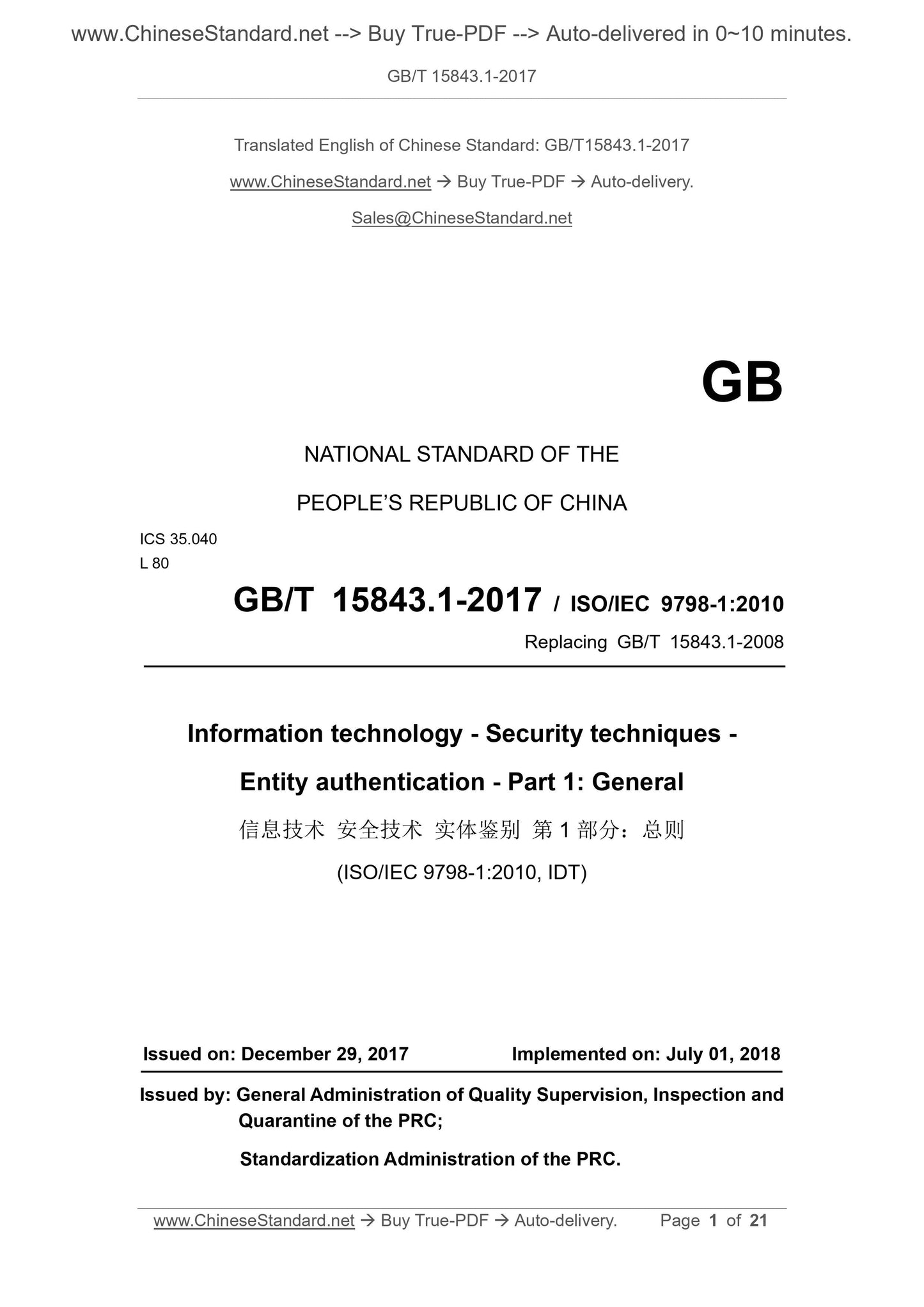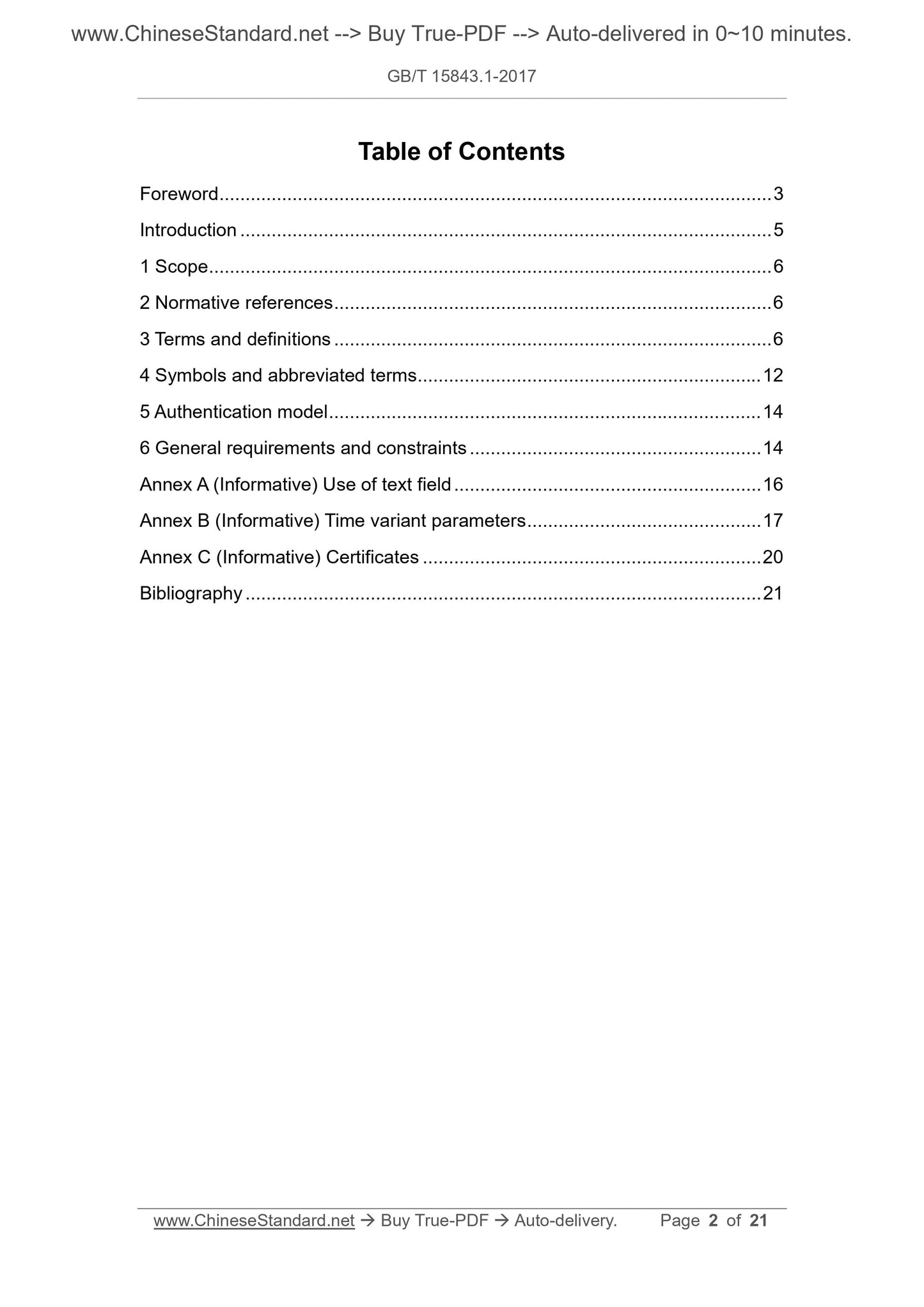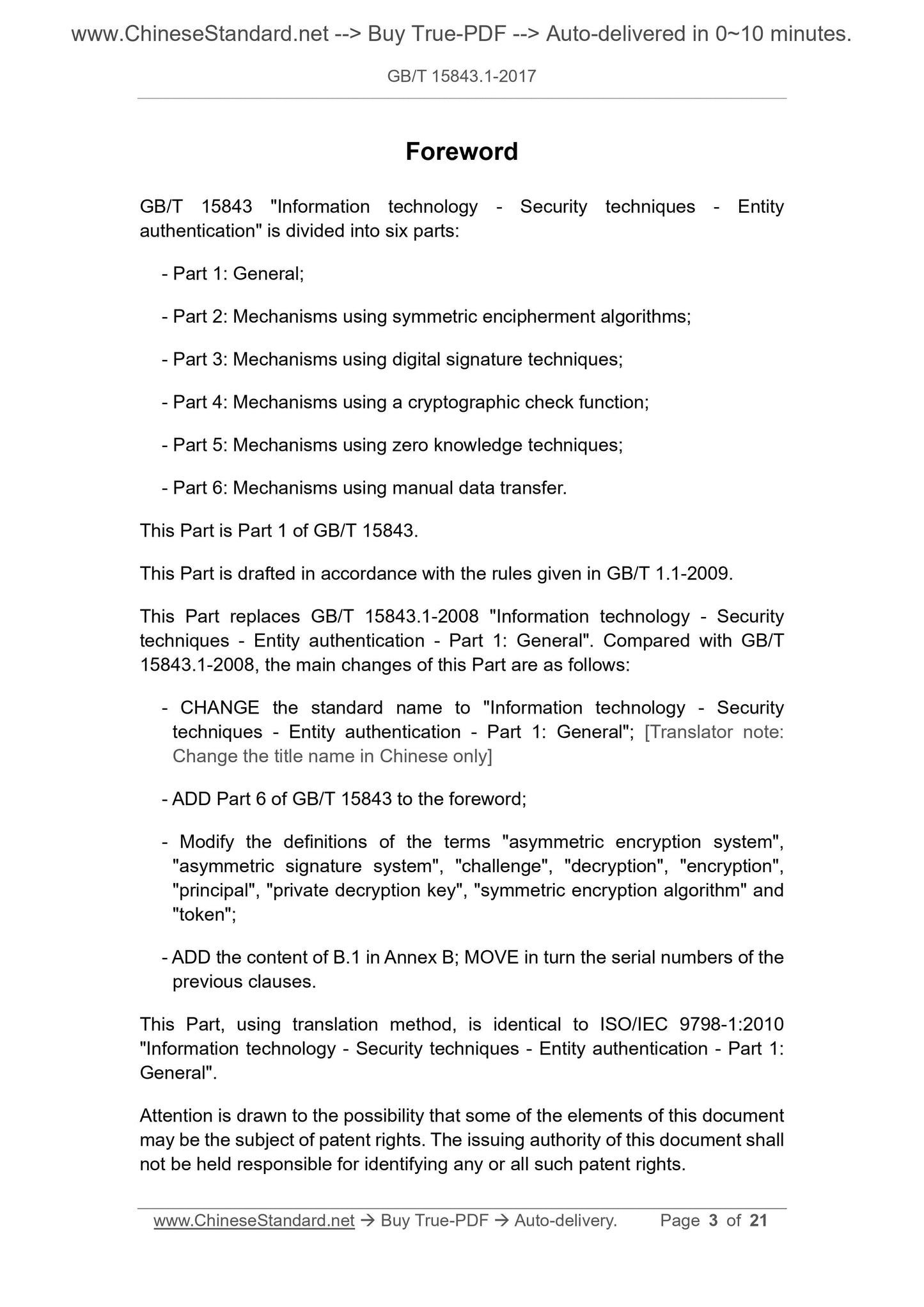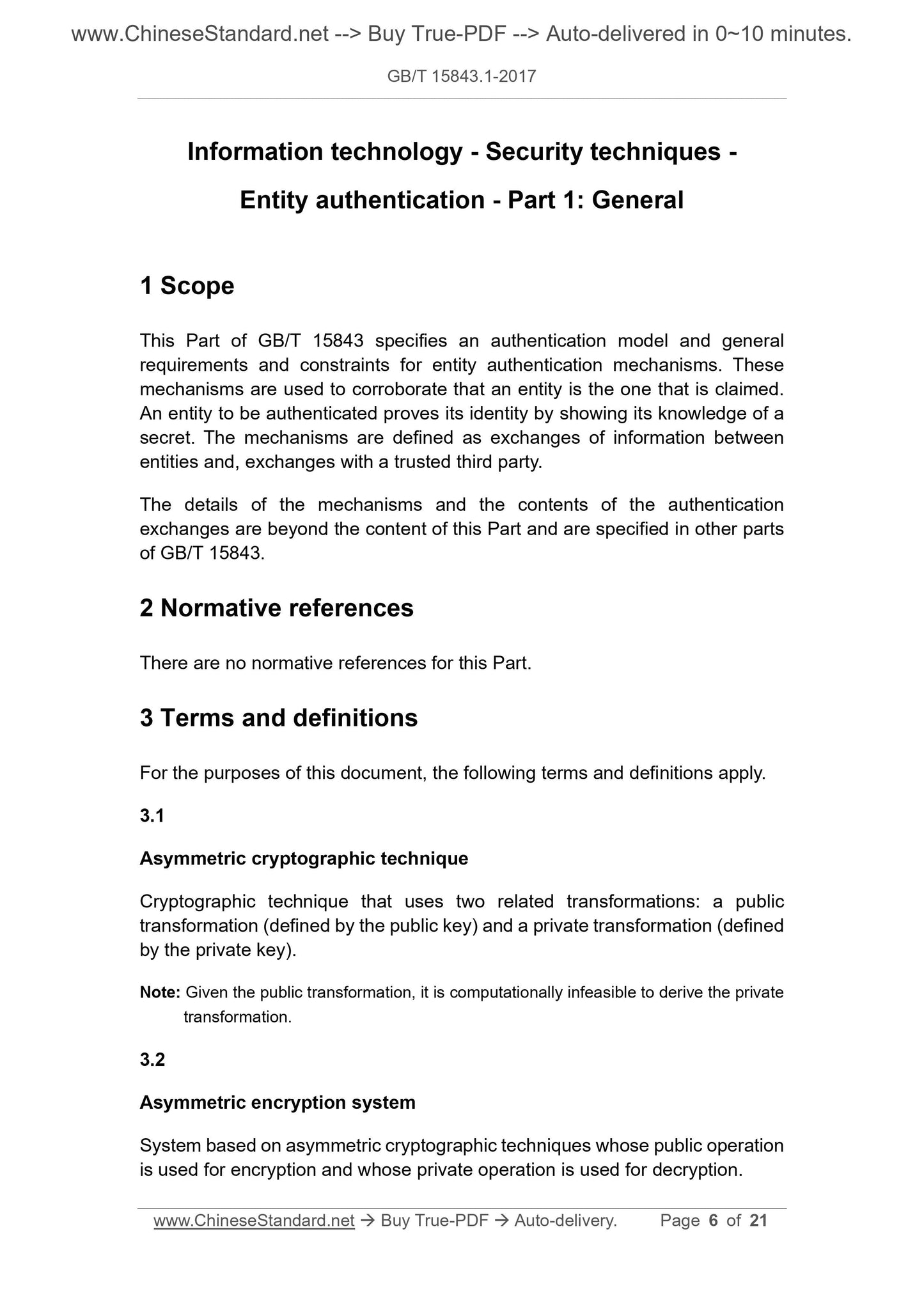1
/
of
4
www.ChineseStandard.us -- Field Test Asia Pte. Ltd.
GB/T 15843.1-2017 English PDF (GB/T15843.1-2017)
GB/T 15843.1-2017 English PDF (GB/T15843.1-2017)
Regular price
$210.00
Regular price
Sale price
$210.00
Unit price
/
per
Shipping calculated at checkout.
Couldn't load pickup availability
GB/T 15843.1-2017: Information technology -- Security techniques -- Entity authentication -- Part 1: General
Delivery: 9 seconds. Download (and Email) true-PDF + Invoice.Get Quotation: Click GB/T 15843.1-2017 (Self-service in 1-minute)
Newer / historical versions: GB/T 15843.1-2017
Preview True-PDF
Scope
This part of GB/T 15843 specifies the authentication model and general constraint requirements in the entity authentication mechanism in detail, and is based on this verificationThe authenticity of the entity's identity, the entity to be authenticated proves its identity by displaying some private information. The entity authentication mechanism determines how
Information exchange between entities, as well as information exchange between entities and trusted third parties.
The details of the entity authentication mechanism and the content of authentication exchange do not belong to the standard content of this part, and are in other parts of GB/T 15843
Regulations.
Basic Data
| Standard ID | GB/T 15843.1-2017 (GB/T15843.1-2017) |
| Description (Translated English) | Information technology -- Security techniques -- Entity authentication -- Part 1: General |
| Sector / Industry | National Standard (Recommended) |
| Classification of Chinese Standard | L80 |
| Classification of International Standard | 35.040 |
| Word Count Estimation | 14,176 |
| Date of Issue | 2017-12-29 |
| Date of Implementation | 2018-07-01 |
| Older Standard (superseded by this standard) | GB/T 15843.1-2008 |
| Regulation (derived from) | National Standards Bulletin 2017 No. 32 |
| Issuing agency(ies) | General Administration of Quality Supervision, Inspection and Quarantine of the People's Republic of China, Standardization Administration of the People's Republic of China |
Share







